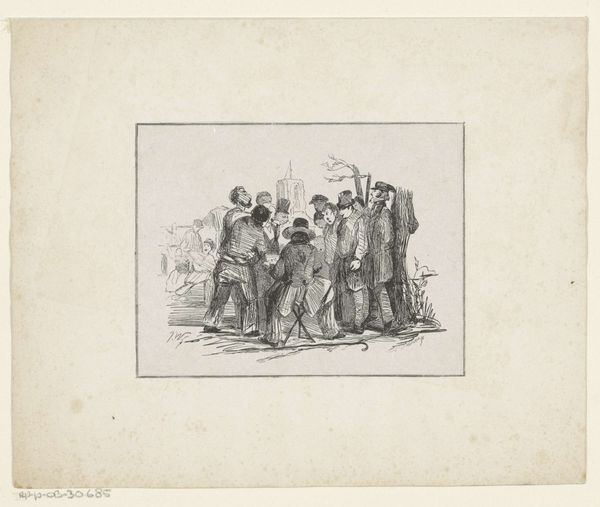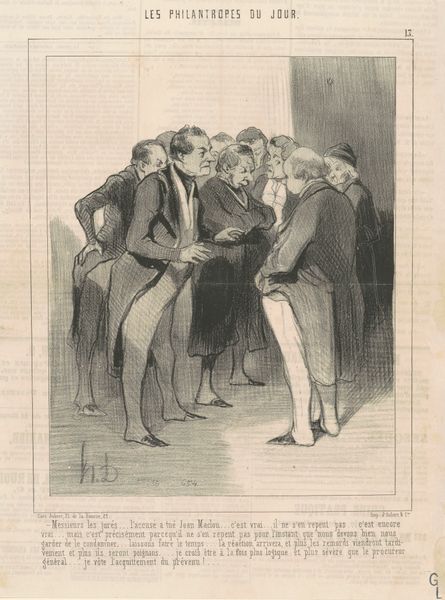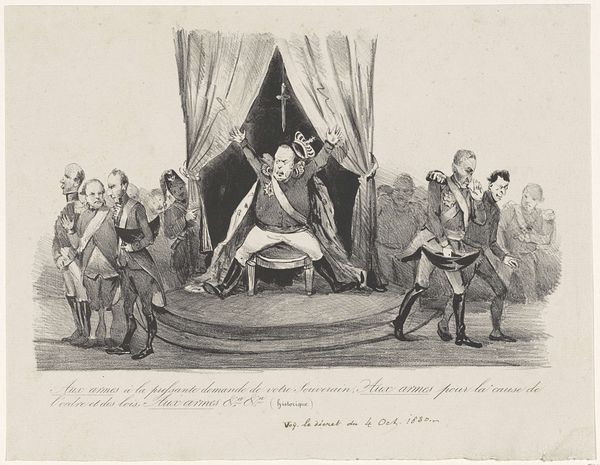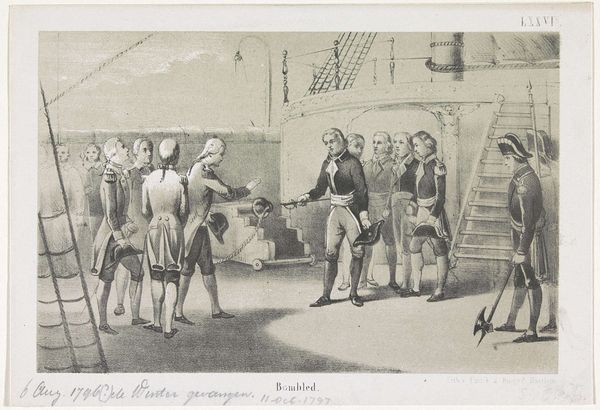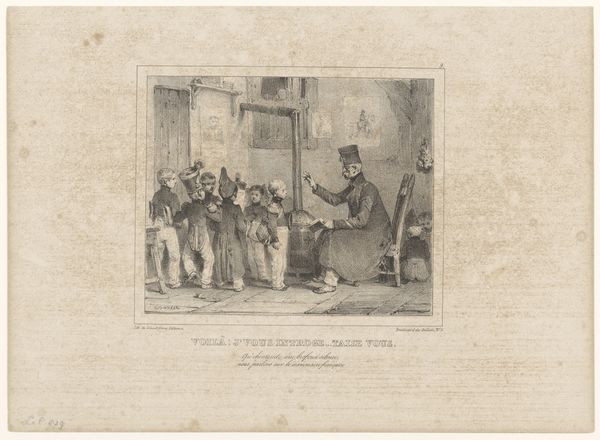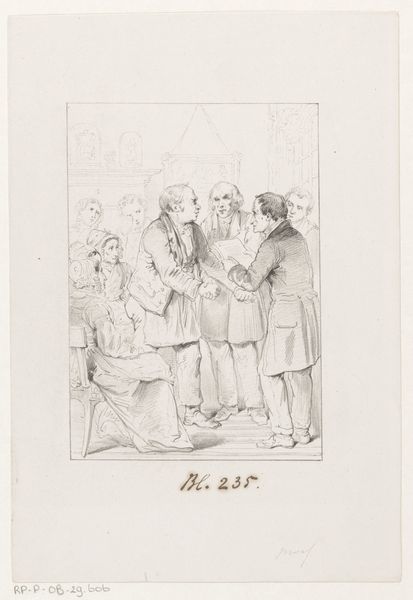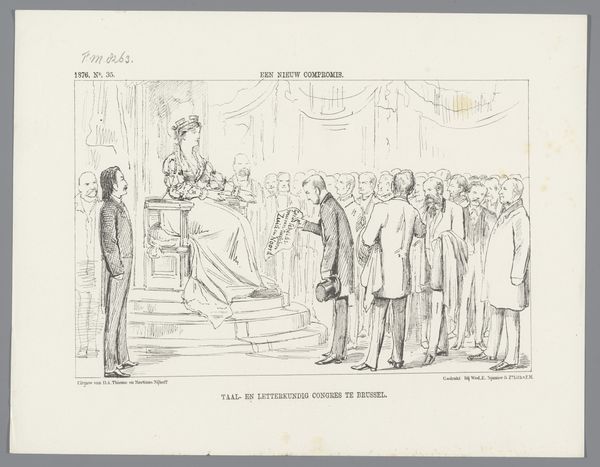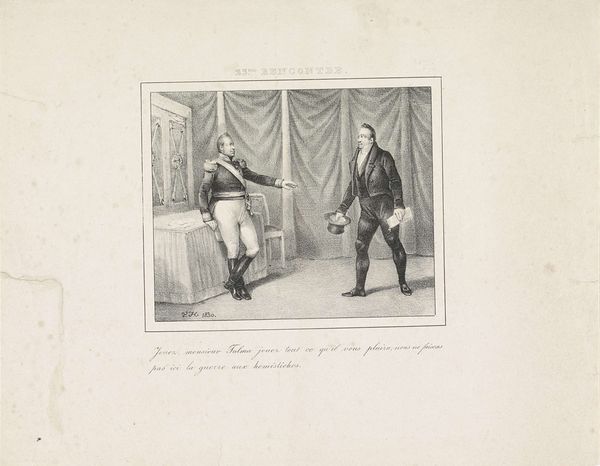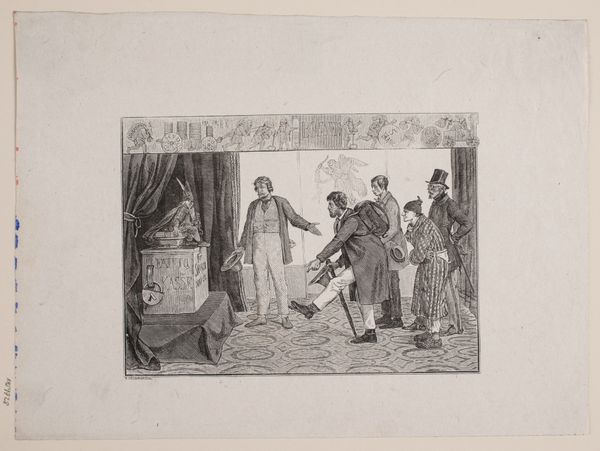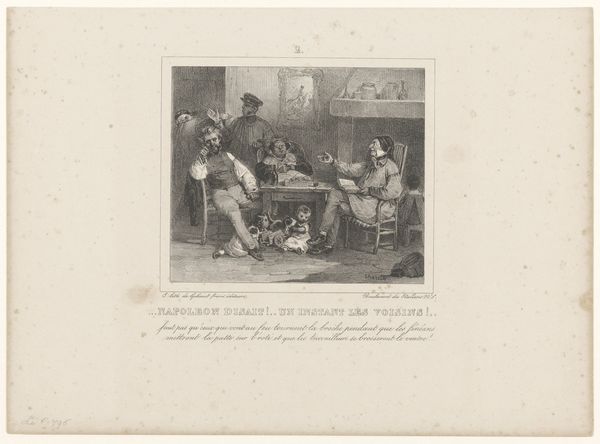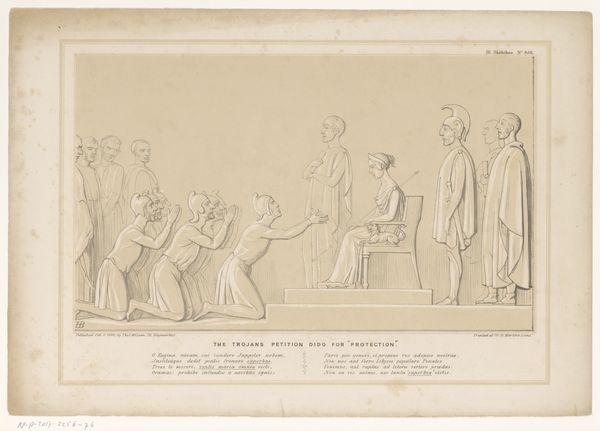
Hertog van Nemours als mogelijke kandidaat voor de Belgische kroon, 1831 1831
0:00
0:00
anonymous
Rijksmuseum
lithograph, print
#
portrait
#
lithograph
# print
#
figuration
#
romanticism
#
history-painting
Dimensions: height 232 mm, width 312 mm
Copyright: Rijks Museum: Open Domain
Curator: This lithograph, simply titled "Hertog van Nemours als mogelijke kandidaat voor de Belgische kroon, 1831," captures a very specific, fleeting moment in 19th-century European political maneuvering. Editor: The tonal range in this lithograph is quite effective, conveying a feeling of anxiety and tension, as if something terrible is about to happen. The exaggerated posture of the duke and the figures offering the tray draws your eye immediately. Curator: Precisely. It visualizes a moment when the Duke of Nemours was considered for the Belgian throne. However, this print also reveals deep distrust as he warns "Don't take it, it is poison!". What hidden anxieties about power do you suppose led to such fears? Editor: The composition uses implied lines and groupings effectively. Note how the men bearing the tray form a solid block, contrasting sharply with the Duke's angular pose, and the second figure recoiling from the tray mimics and amplifies his reaction. I like that the window in the back of the room creates an atmospheric depth. Curator: Right, consider the psychological context. Royal succession was rife with hidden enmities and historical memory plays a large part here: mistrust, ambition, and ever present, danger, were constant companions, and perhaps very much implied when considering taking power in another country, as is made clear in the caution expressed. Do you think there might be a warning against the dangers of power at play? Editor: It's intriguing to consider the psychological motivations reflected in the artist's style. Notice the almost caricatured rendering of the figures. This, along with the satirical caption, points towards an intent to lampoon or criticize. Curator: A critical point! Even the composition directs us toward the Duke’s visceral refusal of the tray. This lithograph acts as both historical record and a psychological snapshot of power, paranoia, and propaganda. The political elite always live on the edge, and are the subject of caricature at the same time. Editor: Well said, considering this lithograph as both art and historical documentation enriches our perception and informs us about its context. Curator: Absolutely, understanding that symbols are born out of socio-historical and personal experiences adds an entirely new layer to appreciating its cultural importance.
Comments
No comments
Be the first to comment and join the conversation on the ultimate creative platform.
